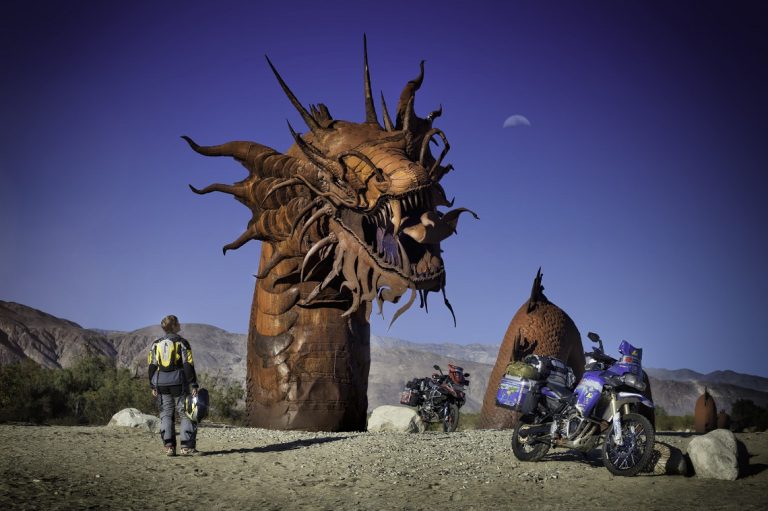We’ve all tried capturing epic shots with moody skies only for the clouds to be washed out and a sheet of white. Simon Thomas shares a simple tip for combatting this common problem
More
Yeah, I know, less is more! Well, that’s what they say. But, sometimes, when it comes to photography, more is actually more! More kit can mean more hassle, more weight, but it also means better opportunities to capture once in a lifetime shots. As riders though, and other than the cost, our biggest problem is “where the hell, do we put the stuff?”
Managing Light
One of the most difficult challenges facing any travel photographer is managing light. As riders, pushing to get from A to B, the images we capture are opportunistic. When you’re in a foreign country, low on fuel and pushing to get to a border crossing before your visa expires, you don’t have the option of waiting around for the perfect light. You simply need to be able to photographically grab what you can, when you can!
Filters
Having a graduated neutral density filter (ND Grad), tucked in your kit bag can be crucial, and the difference between getting the shot or not.
What’s an ND Grad? An ND Grad filter is simply a glass shield, with a gradient from dark to light, that you put in front of the lens. You can handhold in front or buy one that screws to the front of the lens. Although there are hundreds of coloured filters, an ND filter should be colourless and therefore add no colour change to your image.
As a travel photographer, I use ND Grads to capture otherwise impossible shots, where there is a substantial difference between the brightness of the sky and the foreground. How many times have you wanted to grab a shot of your mate with that dramatic sky, only to find out, that when you look at the camera preview the sky is blown-out and just a blur of bright white nothing?
This is where the ND Grad comes in handy. By using the dark half of the ND Grad filter over the portion of the sky, you can control the light and capture that dramatic mix of landscape and sky. The image in this piece was shot in the USA out at the Anza-Borrego Desert State Park. What makes the dragon really stand out is the contrast between the deep blue sky and the orange rust of the dragon itself. Without an ND Grad filter, the sky was just a washout, but with the ND Grad in place, I was able to capture the dark blue that, for me, makes the photo work.
ND Grad filters are small, easily carried, affordable (you can pick them up for around a tenner if you shop around) and a crucial bit of kit. Go online or buy from your local camera store and you’ll be amazed at the difference it will make.
Have fun. Ride far and we’ll see you on the road.

